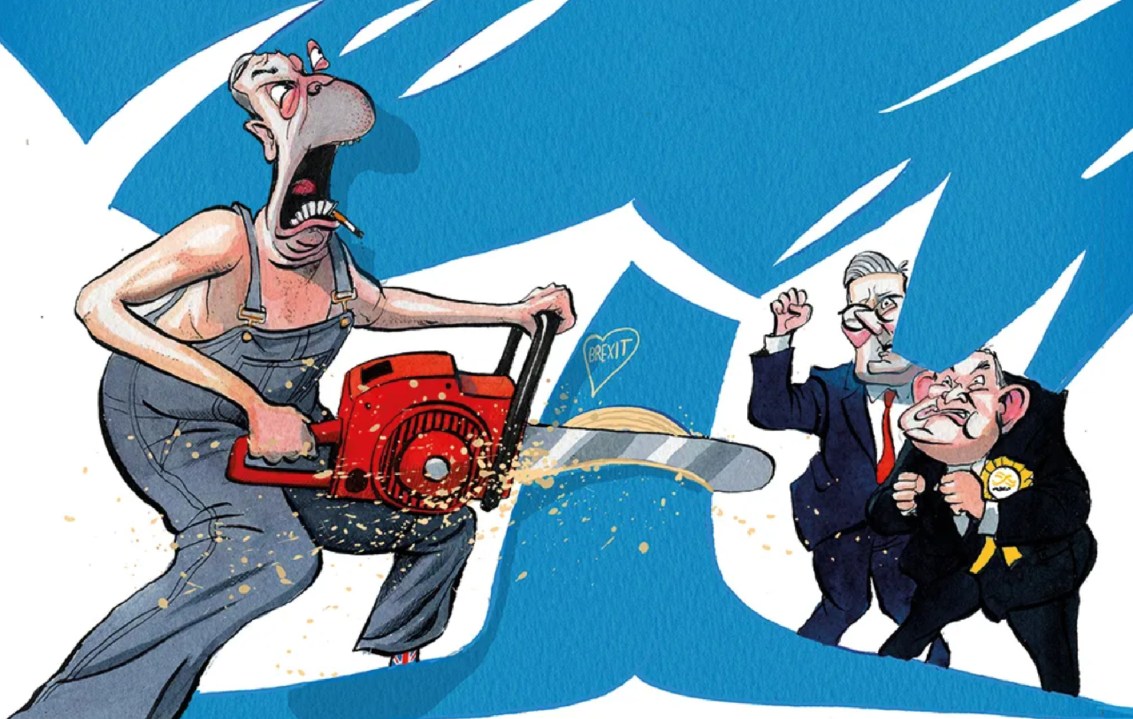On Tuesday afternoon, a familiar figure pulled up at a Westminster café to plot the Tories’ downfall. Nigel Farage beamed from the back of his black Range Rover as he arrived to welcome Reform’s latest recruits. The purpose of the Old Queen Street summit was to plan the party’s path to next year’s local elections in May. Where better to scheme than in the neighbouring street to Conservative Central Headquarters?
‘It baffles me how we’re the most successful political party in the western world,’ says one Tory
While the Tories are enjoying a four-month leadership contest, Farage and his aides are hard at work. A constitution has been drafted to turn the limited company into a proper political party, with parameters to prevent any Ukip-style feuding. More than 100 local branches will launch in the coming weeks to marshal 75,000 paying members. Regardless of who the next leader of the opposition is, Reform is preparing for spring.
The summer recess means the scale of the Tory loss is yet to truly sink in. In the aftermath of 1997, there were three-and-a-half times as many Conservative MPs as Liberal Democrats. Now, the gap between the two parties is fewer than 50. ‘It’s only when you watch them bobbing up and down every two minutes in the Commons that you see it,’ says one Lib Dem veteran. Ed Davey has his sights fixed on the South West, where his party performed poorly in the 2021 locals. The Greens too are looking to traditional Tory areas, after general election triumphs in Waveney Valley and North Herefordshire.
Nearly half of the remaining Tory councillors are up for election in May. Between 2022 and this year, the party lost 2,000 wards in local elections. The councillors fighting in the spring won their seats back in 2021, when ‘Borismania’ was at its peak and Hartlepool was turning blue.









Comments
Join the debate for just £1 a month
Be part of the conversation with other Spectator readers by getting your first three months for £3.
UNLOCK ACCESS Just £1 a monthAlready a subscriber? Log in